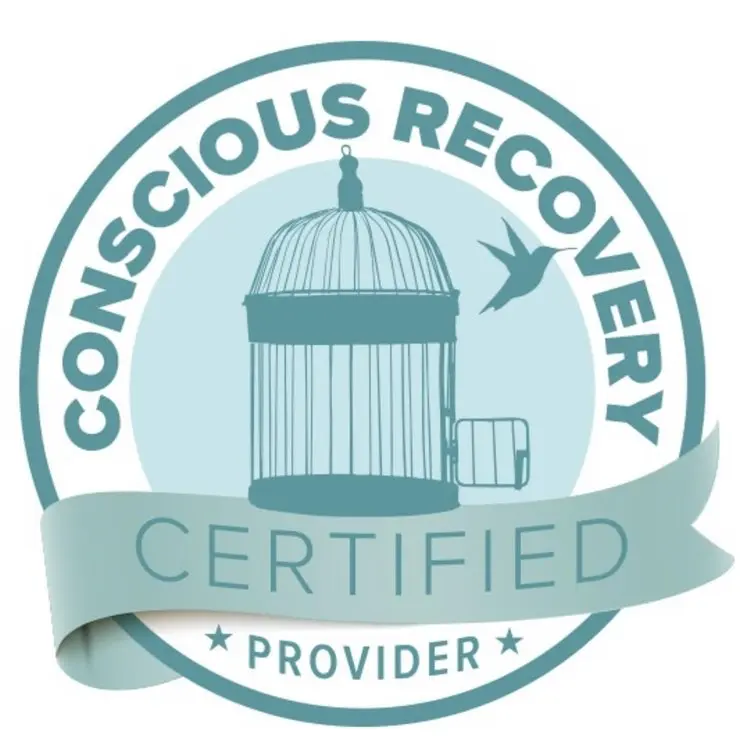When the effects of trauma linger in the body, it can lead to emotional overwhelm, affecting your mental and physical well-being. Somatic therapy offers a powerful, body-centered approach to releasing the grip of complex trauma, helping you find deep healing and lasting relief. Unlike traditional talk therapy, this style of therapy draws inspiration from nature—observing how wild animals naturally recover from life-threatening events by discharging the fight-or-flight response. This transformative healing method teaches humans to safely release chronic stress and tension, restoring balance to both their emotional life and body experience.
At Monima Wellness, we specialize in somatic therapy for women and female-identifying individuals in San Diego as part of our comprehensive trauma treatment methods.
Our Partial Hospitalization Program (PHP) and Intensive Outpatient Program (IOP) incorporate these integrative approaches within a safe, supportive environment where a complete healing experience can occur. Reach out today to discover how our high-quality, compassionate care can help you address complicated issues and reclaim your peace and well-being on the path to an empowered life.

At Monima Wellness Center, somatic therapy is a key component of our culturally-sensitive, relational, attachment-based treatment orientations for women’s mental health in San Diego. Rather than offering standalone therapy sessions, we’ve integrated these powerful alternative treatments into our structured outpatient programs:
In Our PHP (Partial Hospitalization Program)
Clients receive over 30 hours of weekly treatment, including individual and group therapy sessions that incorporate somatic trauma therapy techniques. This intensive program allows for exploration of trauma healing supported by our complete clinical team of holistic practitioners.
Complementary Embodiment Practices
Our programs incorporate additional body-centered healing modalities that complement Somatic Experiencing therapy. Trauma-informed yoga is a powerful somatic expression that helps clients reconnect with their bodies, regulate stress-related emotions, and process trauma through mindful movement and breath. This gentle practice offers an alternative approach to addressing body image issues while fostering resources for emotional healing.
In Our IOP (Intensive Outpatient Program)
As women progress in their recovery journey, our IOP provides 9-15 hours of weekly therapeutic engagement, maintaining access to somatic practices while gradually transitioning back to daily life.
Both programs include neuropsychological testing, psychiatric support, and multiple approaches to therapy working together to address patterns of behavior and create connection for healing.
By experiencing somatic therapy within our comprehensive programs, clients receive complete support throughout their healing journey through compassionate inquiry rather than addressing emotional distress in isolation.
Experience the serene and healing environment of Monima Wellness Center, San Diego’s premier outpatient treatment center designed exclusively for women. Our modern facility offers a peaceful sanctuary where women and female-identifying individuals can focus on recovery surrounded by thoughtfully designed spaces for individual therapy, group sessions, and holistic treatments. From our tranquil yoga studio to our comfortable acupuncture rooms, every aspect of our center has been created to support your healing journey. Take a virtual tour to see firsthand the calming atmosphere where women find strength, community, and renewed well-being.
Somatic therapy is a wide range of approaches aimed at relieving the symptoms of mental and physical trauma through body awareness and somatic practices.
Somatic Experiencing (SE), developed by Dr. Peter Levine in the 1970s, is one of the foremost cutting-edge therapy models in this field. It’s based on the observation that wild animals rarely suffer from trauma despite regular threats to their lives. Levine began to explore how animals naturally regulate and discharge the energy associated with survival-related stress and how this process could be applied to humans struggling with childhood trauma and other complex issues.
This approach to treatment marks a significant shift from traditional talk therapy, which primarily focuses on mental and emotional elements. Instead, somatic therapy offers a holistic therapy approach that encompasses both the psychological and physiological dimensions of trauma, creating deeper connections between mind and body for emotional healing.
As part of our San Diego women’s mental health services, our somatic approaches provide essential forms of treatment for comprehensive trauma recovery and relationship challenges.
At the heart of SE is the focus on the mind-body connection. The method was innovative in identifying the ‘freeze’ response induced by trauma in the body. These physical manifestations, ranging from tension and chronic pain to disrupted breathing patterns and heightened alertness, are key indicators of trauma stored in the body. SE is designed to facilitate the release of these physical expressions, aiding the healing process.
Distinct from conventional therapies that primarily concentrate on psychological aspects, SE acknowledges the critical role of physical responses in experiencing and recovering from trauma and post-traumatic stress disorder (PTSD).
By addressing these physical elements, SE provides a path to a more integrated recovery, uniting the mind and body. This forward-thinking approach has established SE as an influential and effective method in trauma therapy.
SE differs from other trauma therapies, such as exposure therapy, primarily in its approach to processing trauma. SE focuses on the body’s sensations and responses, helping individuals release trauma stored physically without necessarily requiring them to relive or extensively talk about the traumatic event.
On the opposite end of the spectrum, exposure therapy involves directly confronting and re-experiencing the traumatic memories, often through detailed discussion, to reduce fear and avoidance behaviors. SE’s gentle, body-focused approach offers an alternative for those who might find the confrontation of traumatic memories too distressing.
Contact us today at 858-500-1542 to begin your journey to recovery.
Meet Monima Wellness Center, your partner in transformative healing.
The principles of SE therapy offer a comprehensive framework for addressing the complexities of trauma with this therapeutic approach. The key principles of SE include:
This principle is central to SE, emphasizing that trauma affects not just the mind (thoughts and emotions) but also the body. It recognizes that psychological stress and trauma often manifest physically, impacting the body’s physiology and contributing to various health issues.
SE focuses on helping individuals become aware of their bodily sensations and responses. This involves guiding clients to observe and describe their physical feelings, which can be indicators of unresolved trauma. The practice helps in identifying how trauma is held in the body.
SE operates on the understanding that trauma can dysregulate the nervous system, leading to a heightened state of arousal or a numbed, disconnected state. The therapy aims to help clients develop the capacity to self-regulate, bringing their nervous system back to a balanced state.
SE facilitates the release of physical and emotional tension that is trapped in the body due to trauma. This is achieved through natural processes like shaking, crying, or deep breathing, which are seen as the body’s way of discharging excess stress and restoring equilibrium.
Safety is paramount in SE therapy. The approach involves creating a supportive and non-judgmental space where clients can explore their trauma at a pace that feels safe for them without becoming overwhelmed.
These are techniques used in SE to gradually expose clients to traumatic memories (titration) and then help them oscillate between the traumatic memory and a sense of safety or neutrality (pendulation). This method avoids re-traumatization and aids in integrating traumatic experiences in a manageable way.
SE emphasizes the importance of developing internal and external resources to help individuals cope with and recover from trauma. Resources can include personal strengths, supportive relationships, positive memories, and grounding exercises.
SE aims for holistic healing, addressing the cognitive, emotional, physical, and spiritual aspects of a person’s being. It seeks to integrate these facets to support comprehensive recovery and well-being.
Somatic therapy at Monima Wellness begins with a crucial neuropsychological assessment, laying the foundation for the therapeutic journey. In this phase, our team assesses the client’s physical and emotional state to understand the impact of trauma on their life. This involves delving into the client’s history, pinpointing specific concerns, and setting therapy goals for the trauma healing experience in our outpatient programs.
SE therapy progresses through key stages:
Each stage of somatic experiencing therapy is carefully navigated to ensure a holistic and effective healing experience.
Contact us today at 858-500-1542 to begin your journey to recovery.
Somatic experiencing therapy offers a transformative journey toward healing, with benefits that extend well beyond traditional therapy outcomes. This unique approach to trauma recovery and stress management has been shown to enhance the quality of life for its practitioners significantly. Some studies suggest somatic therapy may even reduce symptoms of PTSD. Here, we explore the multifaceted benefits of SE that contribute to a holistic sense of well-being.
SE facilitates a safe release of emotional burdens from trauma, significantly easing symptoms like anxiety and depression. This leads to a profound sense of emotional freedom and well-being.
Through SE, individuals gain heightened self-awareness, particularly in recognizing bodily sensations. This fosters mindfulness and a more present, engaged life experience.
As emotional regulation and self-awareness improve, so do personal relationships. SE aids in developing better communication and empathy, enriching social connections.
SE acknowledges the body’s role in trauma, offering relief from trauma-linked physical issues such as tension headaches and digestive problems. It promotes a healthier connection with the body, enhancing physical well-being.
SE builds resilience by teaching effective coping mechanisms for trauma and stress. This empowers individuals to handle future challenges with greater ease.
SE empowers individuals in their healing journey, leading to greater control over their lives and decisions boosting confidence and self-esteem.
Monima Wellness Center provides a safe and nurturing environment where our clients can explore their healing journey. Somatic therapy is offered as part of an integrated treatment plan tailored to meet each individual’s needs, respecting their individual pace and experience. In general, we focus on:
Understanding the deep connection between emotional and physical states and using this knowledge to foster recovery.
Guiding clients to become aware of their bodily sensations is crucial in identifying and releasing trauma.
Helping clients develop the ability to self-regulate, reducing symptoms of anxiety, depression, and other trauma-related conditions.
Employing gentle techniques to release pent-up trauma, aiding in the recovery of a balanced and healthy life.
Contact us today at 858-500-1542 to begin your journey to recovery.
When you’re ready to address trauma at its roots, Monima Wellness Center offers San Diego’s premier somatic therapy program specifically designed for women. Our comprehensive approach combines body-centered healing with complete mental health support in a structured, supportive environment.
Contact us today to learn how our PHP and IOP programs can help you transform trauma into lasting well-being and reclaim your life.
Our women-centered somatic therapy approach is available exclusively through our outpatient treatment programs at our San Diego wellness center.

A somatic therapist helps clients explore and release physical tension and emotional distress stored in the body, using body awareness and somatic expression. At Monima, our holistic practitioners incorporate these approaches to healing within our integrative treatment approach.
Somatic Experiencing focuses on the body’s physical response to trauma and chronic stress, offering transformative healing that complements traditional talk therapy. This style of therapy aligns with our holistic philosophy of addressing both body experience and emotional lives in recovery.
Somatic approaches can be highly effective, particularly for individuals dealing with complex trauma, as they address patterns of behavior and both psychological and physical aspects of healing. When integrated into our complete healing experience like our PHP or IOP, it becomes even more powerful for deep healing.
Complex trauma or C-PTSD results from prolonged exposure to traumatic situations, often in childhood or relationships with power imbalances. Unlike single-incident PTSD, complex trauma affects identity, relationships, and emotional regulation more pervasively.
At Monima, we specialize in supporting women and female-identifying individuals struggling with complex trauma through our culturally sensitive, attachment-based treatment programs. Our somatic approaches specifically address how trauma is stored in the body, while our comprehensive care model provides the safe, supportive environment needed for deep healing from these complicated experiences.
Absolutely. Somatic therapy is beneficial for a wide range of emotional and psychological issues, including anxiety, depression, and difficulties in forming deeper connections, which we address through compassionate inquiry in our women’s programs.
Eye movement reprocessing sensitization (EMDR) is not strictly a somatic therapy, but it incorporates embodiment practices, focusing on the connection between psychological distress and fight-or-flight response. We offer both alternative treatments within our programs.
No, somatic approaches can be helpful for anyone dealing with feelings of stress or wanting to improve their emotional healing and body image. Our programs are designed to address various complicated issues and support an empowered life.
Find out if Monima is the right treatment center for you or your loved one. Please note: we are an insurance-friendly organization.

